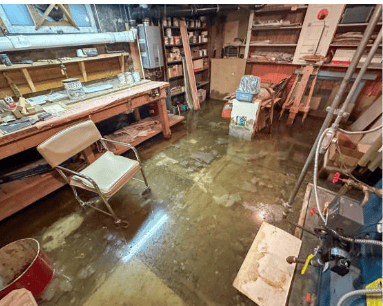What is a DIY disaster? A DIY disaster occurs when a seemingly simple home project spirals out of control, leading to unintended consequences, subpar results, or even significant damage. Read on as we delve into what is a DIY disaster, explore some common pitfalls, and offer best practices to help you successfully navigate your next home improvement endeavor. Whether you’re a seasoned DIY enthusiast or a novice looking to start small, understanding what is a DIY disaster can save you time, money, and frustration.
Even experienced real estate investors like Steve Daria and Joleigh have encountered their share of DIY disasters. Often, these pitfalls result from underestimating a project’s complexity or needing more proper tools and knowledge to execute it correctly. Proper planning, research, and realistic assessments of your skills and resources are essential to avoid these common mistakes.
Understanding the Risks of DIY Projects
Before discussing “What is a DIY disaster?” it’s essential to understand that DIY projects have inherent risks.
Without professional knowledge, mistakes can be costly and even dangerous.
It’s crucial to understand these risks before starting any project.
What is a DIY Disaster?
What is a DIY disaster, exactly? Some common DIY disasters include structural damage, electrical mishaps, plumbing issues, and poor craftsmanship.
These mistakes can end up in expensive repairs and devalue your property.

Safety Concerns
Safety should be a top priority.
Failure to use the correct tools or materials or follow safety protocols can result in serious injuries.
Always prioritize safety to avoid a DIY disaster.
Financial Implications
DIY disasters can drain your finances.
Fixing mistakes often costs more than hiring a professional from the start.
Consider the financial implications before going on a DIY project.
Planning Your DIY Project
To better understand “What is a DIY disaster?” An in-depth planning is the foundation of a successful DIY project.
Setting Realistic Goals
Set achievable goals for your project.
Overambitious plans can lead to frustration and mistakes.
Break down the project into manageable tasks.
Budgeting and Materials
Budgeting is essential to avoid overspending.
List all materials needed and compare prices.
Buy quality materials to ensure durability and prevent a DIY disaster.
Time Management
Allocate sufficient time for each task.
Rushing can lead to mistakes.
Establish a timeline and stick to it, allowing extra time for unexpected delays.
Get An Offer Today, Sell In A Matter Of Days...
Essential Tools for DIY Projects
Having the right tools is crucial for avoiding a DIY disaster.
Investing in quality tools can make your tasks easier and more efficient.
Basic Tool Kit
An essential tool kit should include a hammer, screwdrivers, pliers, tape measure, utility knife, and a level.
These tools are necessary for most DIY projects.
Power Tools
Power tools like drills, circular saws, and sanders can save time and effort.
Learn how to use them safely to avoid accidents.
Specialty Tools
You may need specialty tools like a tile cutter or paint sprayer for specific projects.
Renting these tools can be a cost-effective option.
Gaining the Necessary Skills
Skill acquisition is vital for a successful DIY project.
A lack of skills can result in a DIY disaster, so invest time in learning.
Online Tutorials and Courses
Many online platforms offer tutorials and courses on various DIY skills.
Websites like YouTube, Udemy, and Coursera are excellent resources.
Practice Makes Perfect
Practice your skills on smaller projects before tackling major ones.
This builds confidence and lowers the risk of mistakes.
Seeking Professional Advice
Feel free to seek advice from professionals.
They can provide knowledge, insights, and tips to prevent a DIY disaster.
Common DIY Mistakes to Avoid
Dodging common mistakes can save you time, money, and frustration.
Learn from others’ experiences to avoid a DIY disaster.
Skipping the Prep Work
Preparation is vital to any successful project.
Skipping prep work can lead to poor results and costly repairs.
Ignoring Instructions
Always follow instructions carefully.
Ignoring them can result in improper installations and unsafe structures.

Overestimating Your Abilities
Be honest about your skills.
Overestimating your abilities can lead to mistakes and a DIY disaster.
Handling Electrical Projects Safely
Electrical projects are complex and dangerous.
Proper knowledge and caution are essential to avoid a DIY disaster.
- Understanding Electrical Systems: Know the basics of your home’s electrical system. This knowledge helps you perform tasks safely and efficiently.
- Safety Precautions: Always turn off the power before working on electrical projects. Use insulated tools and wear protective gear.
- When to Call a Professional: Some electrical tasks require professional expertise. If you need clarification on a project, call an electrician.
Tackling Plumbing Projects
Plumbing projects can be tricky.
Planning and execution are crucial to avoid leaks and water damage.
- Identifying Common Plumbing Issues: Leaky faucets, clogged drains, and running toilets are common plumbing issues. Identify the problem before starting any work.
- Basic Plumbing Tools: Essential plumbing tools include pipe wrenches, pliers, a plunger, and a pipe cutter. Ensure you have the right tools for the job.
- Avoiding Plumbing Pitfalls: Follow best practices to avoid mistakes like over-tightening fittings or incorrect pipe sizes.
Painting Like a Pro
Painting is a popular DIY project.
Proper preparation and technique are important to achieving professional-looking results.
- Choosing the Right Paint: Select high-quality paint suitable for the surface you’re working on. Consider factors like color, finish, and durability.
- Preparing the Surface: Proper surface preparation ensures a smooth finish. Clean, sand, and prime the surface and paint.
- Applying Paint: Use suitable materials and techniques for applying paint. To prevent drips and uneven coverage, it’s advisable to apply several thin coats instead.
Flooring Installation Tips
Installing new flooring can transform your space.
Follow these tips to avoid a DIY disaster.
- Selecting the Right Flooring: Choose flooring that suits your lifestyle and budget. Consider factors like durability, maintenance, and aesthetics.
- Preparing the Subfloor: Proper subfloor preparation is important for a successful installation. Clean, level, and dry the subfloor before laying new flooring.
- Installation Techniques: Follow the manufacturer’s instructions for installation. Use the right tools and techniques to ensure a seamless finish.
Maintaining Your DIY Projects
Scheduled maintenance is essential to preserve the quality and longevity of your DIY projects.
- Cleaning and Upkeep: Routine cleaning and upkeep prevent wear and tear. Follow recommended maintenance practices for each project.
- Addressing Minor Issues: Fix minor issues right away to prevent them from escalating. Regular inspections help identify potential problems early.
- Long-term Care: Invest in long-term care to keep your projects looking and functioning like new ones. This includes refinishing, repainting, and resealing as needed.
Conclusion
DIY projects can be advantageous, but they come with risks. Understanding what is a DIY disaster can help you achieve successful results. Proper planning, skill acquisition, and adherence to safety protocols are crucial.
Remember to seek professional help when needed. Ready to take on your next DIY project? Start planning today and turn your vision into reality.
**NOTICE: Please note that the content presented in this post is intended solely for informational and educational purposes. It should not be construed as legal or financial advice or relied upon as a replacement for consultation with a qualified attorney or CPA. For specific guidance on legal or financial matters, readers are encouraged to seek professional assistance from an attorney, CPA, or other appropriate professional regarding the subject matter.

